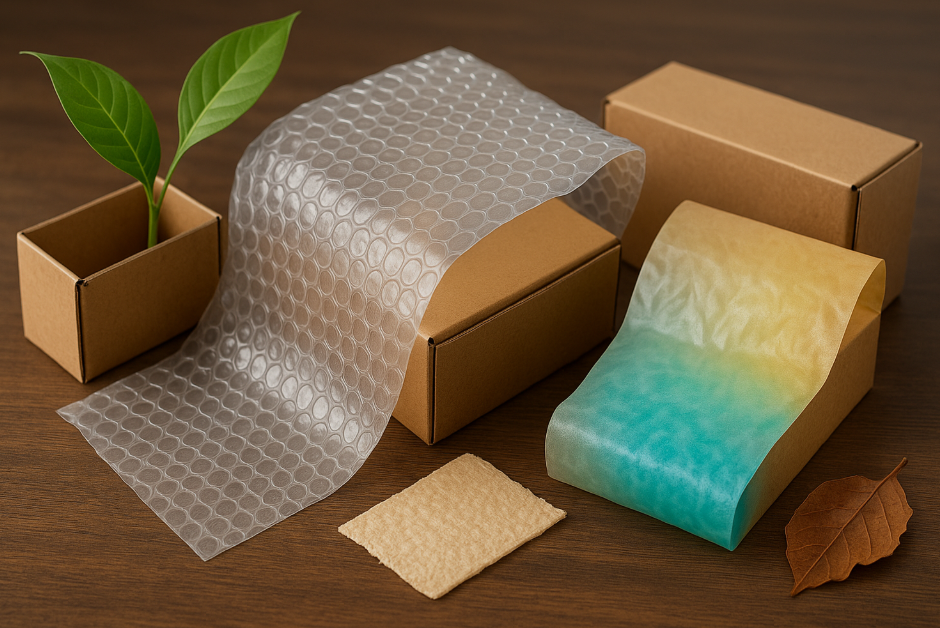From self-healing coatings to humidity-responsive materials, discover innovations in packaging that adapt and protect intelligently and sustainably.
Imagine packaging that reacts like living tissue. A box that seals itself when damaged. A bag that changes colour when humidity is too high. These are not just concepts, they’re rapidly becoming real thanks to bio-inspired materials taking smart packaging to the next level.
Nature as the Design Blueprint
Scientists are looking to nature’s chemistry and structure for inspiration—the way a shark’s skin resists barnacles or a cuttlefish adjusts its colour to its surroundings. This design philosophy, known as biomimicry, is guiding breakthroughs in material science.
In packaging the impact is tangible: materials that heal themselves, adapt to moisture or temperature and integrate sensors to monitor freshness or damage in real time.
Intelligent Packaging Gets Real
Recent research highlights how bio-based smart packaging is moving from theory to factory floor. One study noted materials built from renewable sources that combine gas sensors, humidity indicators and even antimicrobial functions to protect food and reduce waste. (Frontiers)
Another review pointed to bio-based polymers that don’t just degrade—they respond. They might tighten in high humidity, release preservatives when spoilage begins or alert an operator via colour change when conditions are off. (MDPI)
Why Supply Chains Should Care
In warehousing and logistics, packaging isn’t just about containment, it’s about protection, monitoring and optimisation. Bio-inspired smart packaging offers:
-
Reduced product loss: Packages detect spoilage or damage before it becomes a claim.
-
Greater efficiency: Actively adapting materials mean fewer replacements and less over-packaging.
-
Sustainability: Bio-based and sensor-integrated materials reduce reliance on plastics and single-use systems.
For any operation handling perishables, high value items or high turnover stock it’s a leap toward smarter fulfilment.
Practical Innovations to Watch
-
Self-Healing Films: Studies show polymers capable of repairing micro-tears when triggered by light or heat.
-
Humidity-Responsive Materials: Packaging that changes physical properties based on moisture levels to protect contents.
-
Embedded Sensors: Bio-based films with indicators of pH, gas levels or freshness built directly into the material.
What’s Next
The next few years will likely see these advanced materials graduate from lab trials to commercial applications. Suppliers who move first may gain an edge in sustainability reporting, damage reduction and inventory accuracy. The packaging evolution is underway and it’s smarter, more adaptive and far more capable than ever.










